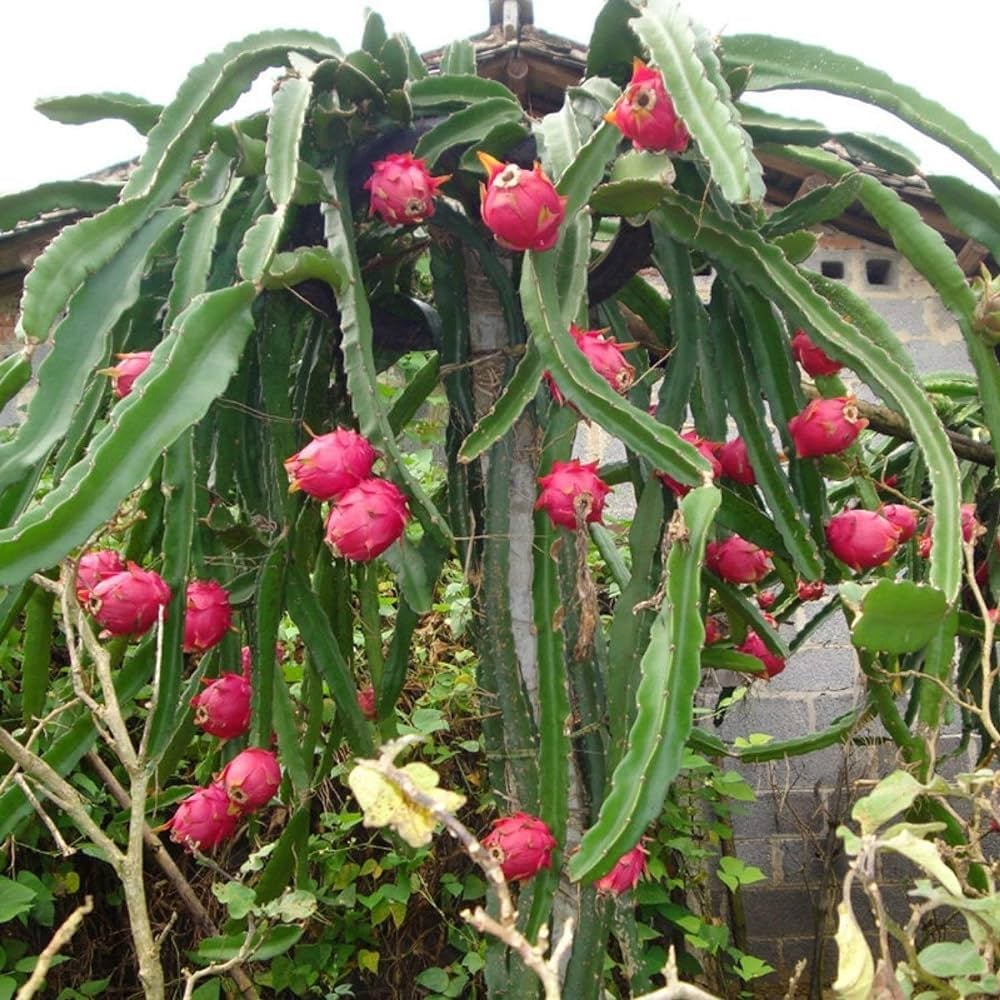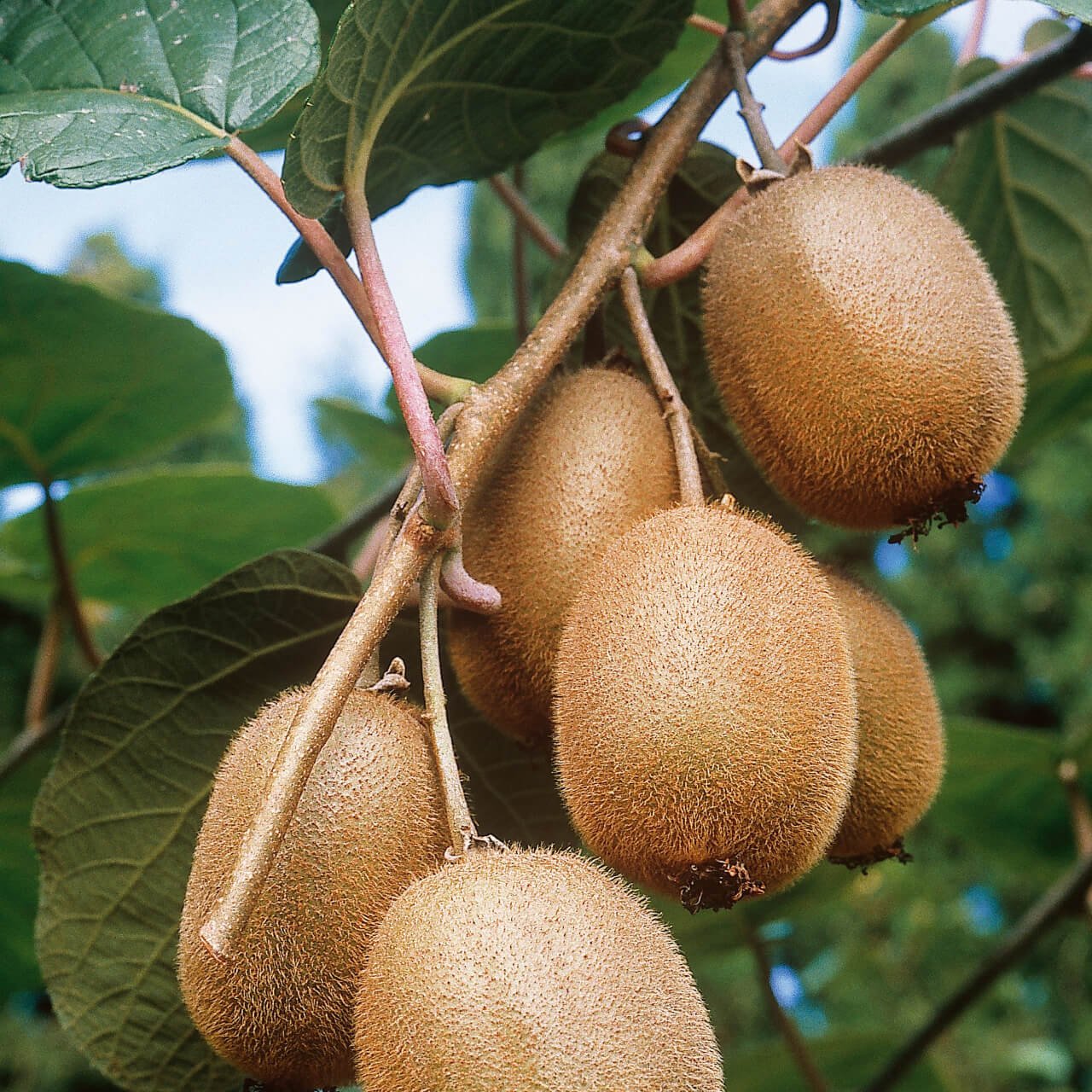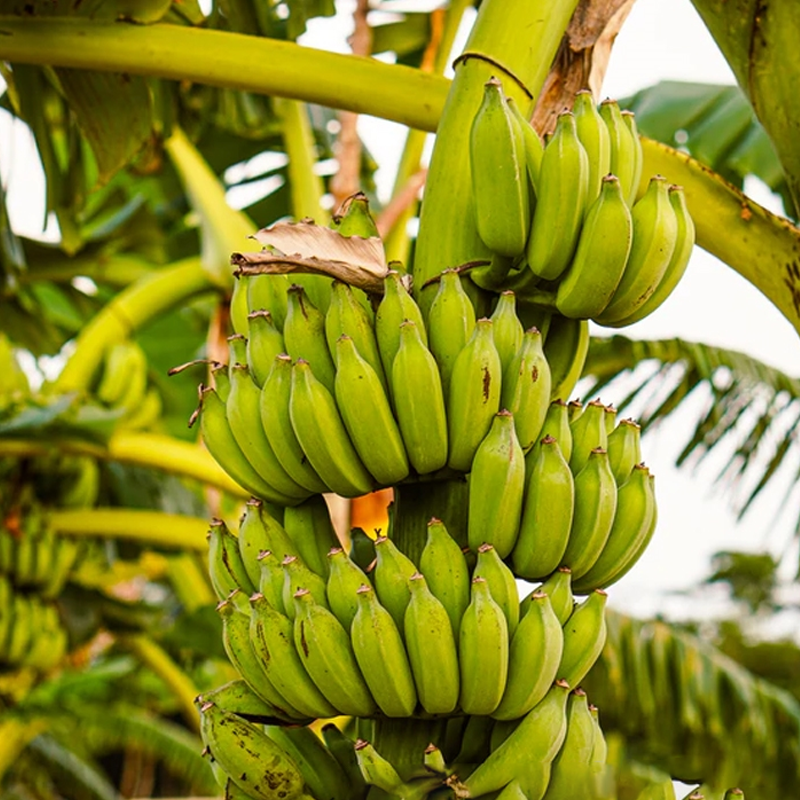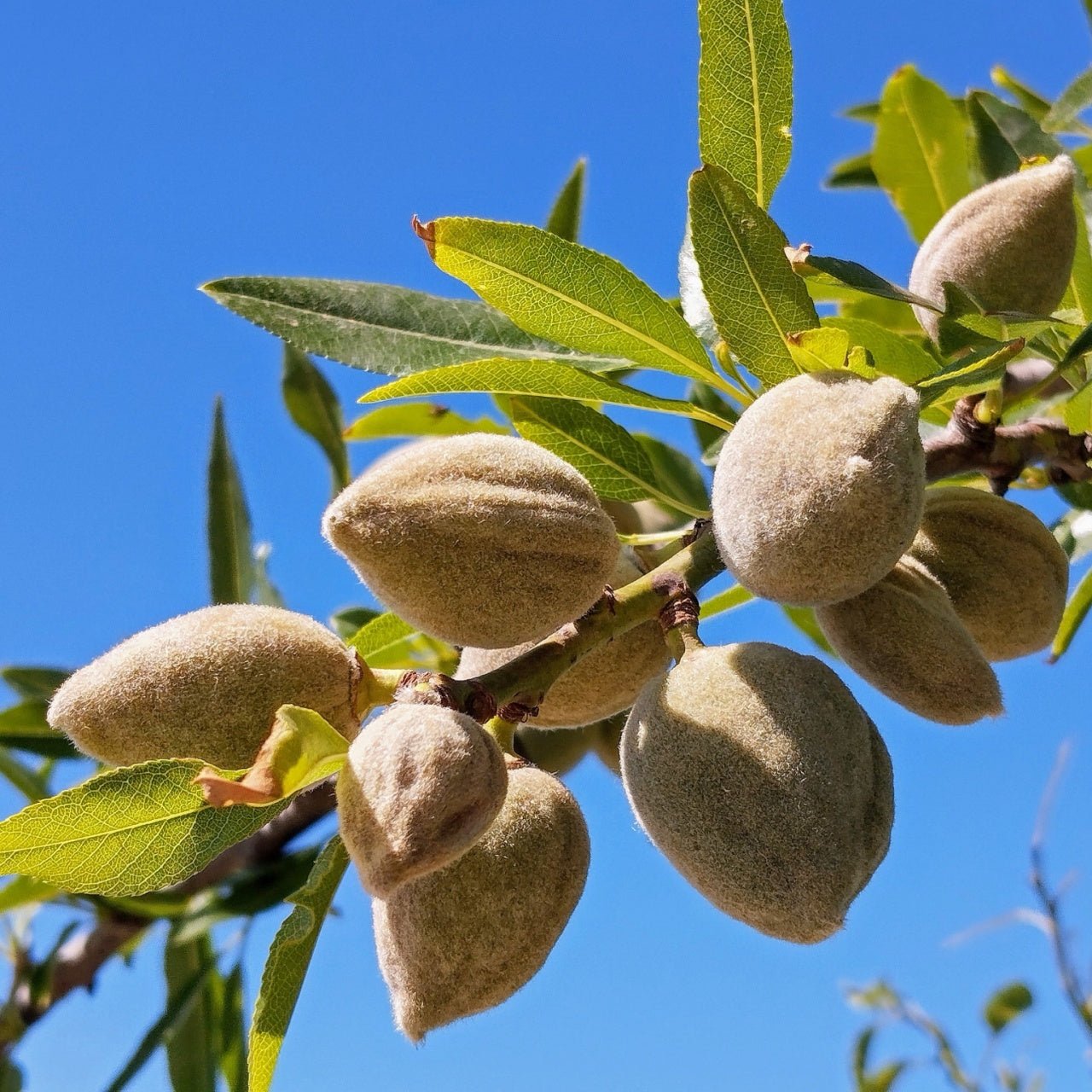
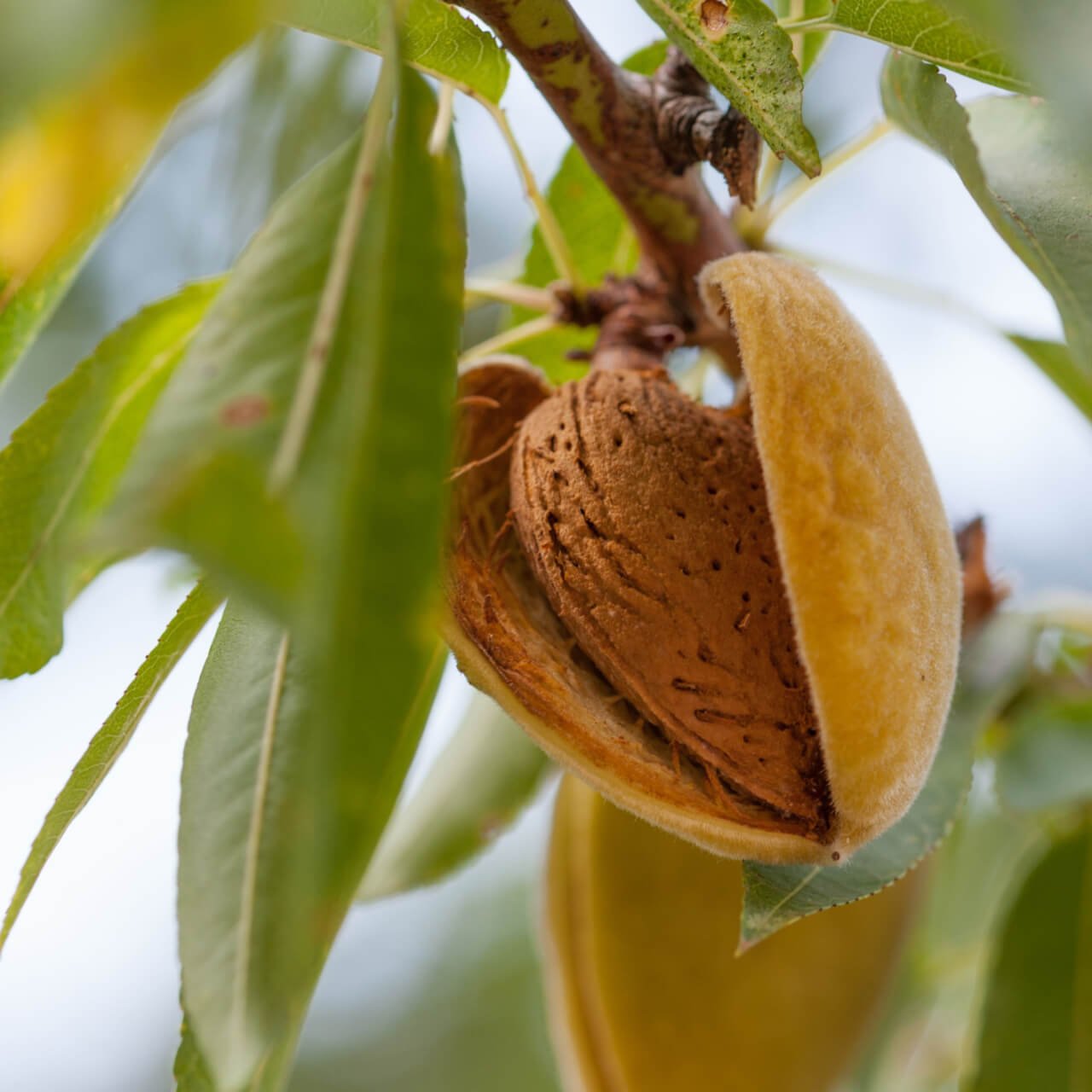
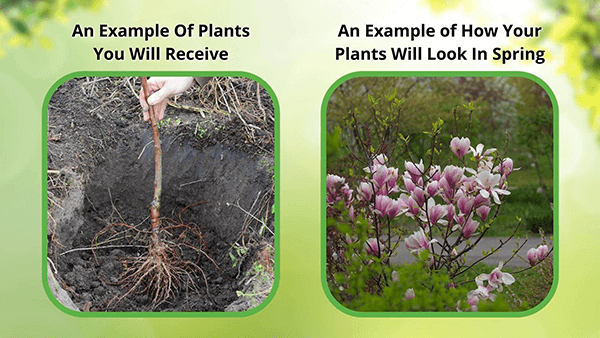
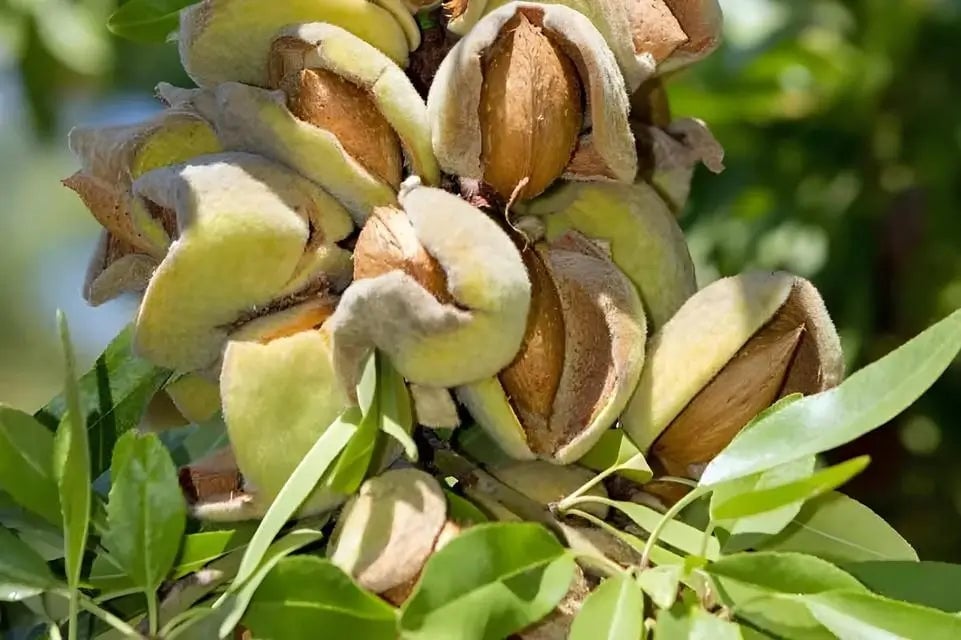

Hall's Hardy Almond Tree
Attracts bees and pollinators
Beautiful, fragrant spring blooms
Drought-tolerant once established
Thrives in
ZONE 5ZONE 6ZONE 7ZONE 8ZONE 9ZONE 10This plant ships:
Ships Week Of May 12th1 Year Guarantee on all plants
Almond Tree: Hall's Hardy
Almond trees are not just pretty; they're a fruitful investment for anyone looking to cultivate delicious nuts in their backyard or on a larger scale. Whether you dream of sunny orchards or a few lovely trees lining your garden, understanding how to care for them can lead to a bountiful harvest. While nurturing these trees may seem challenging initially, with the right knowledge and techniques, you'll discover just how rewarding it can be. In this article, we'll explore the essential aspects of growing almond trees, from their origins and ideal conditions to practical care tips to help your trees thrive. So, let's dig in!
Size Shipped 2-3'
Prunus amygdalus thrives in warm, dry climates with mild winters and requires well-drained soil, full sunlight, and adequate watering-around 24-36 inches annually. Proper care includes regular pruning for health, soil testing for fertilization needs, pest control practices to manage infestations, and ensuring sufficient chilling hours in winter for optimal fruit production.
Origins and Varieties of the Almond Tree
Prunus amygdalus is believed to have developed in the Middle East.
Archaeological evidence suggests that these trees were cultivated as early as 3000 BC, making them one of humanity's oldest cultivated crops. As time passed, they began their journey across the Mediterranean, thriving in diverse climates, contributing to their evolution into the numerous varieties we see today.
What's particularly intriguing is how these variations emerged over centuries, leading us to identify two primary types: sweet and bitter.
Historical Footprint Of Te Almond Tree
Their journey from their origins in the Middle East through Spain to their flourishing presence in California illustrates not only their cultural significance but also their remarkable adaptability.
This adaptability allows gardeners globally to cultivate them successfully with appropriate care-ensuring they can thrive even in less-than-ideal conditions.
With a solid grasp of these fascinating trees' origin, varieties, and production aspects, let's now focus on exploring the environmental elements that play a big role in their growth.
Ideal Climate and Soil for Them
Prunus amygdalus greatly benefits from Mediterranean climates characterized by distinct seasonal changes. They thrive in warm, dry summers complemented by mild and wet winters. The optimal temperature range for these trees hovers between 59°F and 86°F (15°C to 30°C).
During their dormancy period, the buds require between 200 to 700 hours of temperatures below 45°F (7.2°C) to break dormancy effectively. This fluctuation in temperature ensures that the tree has both the warmth needed for growth in the summer and the chill required to develop its buds in winter properly.
Now, let's discuss soil preferences. Almond trees particularly favor sandy loam soils due to their excellent drainage capabilities. These soils have just the right texture to retain moisture while preventing waterlogging, which can be detrimental to root health.
Imagine trying to walk after a heavy rainstorm in a muddy field; that's how waterlogged soil feels to a struggling plant. Given that plants prefer well-drained environments, ensuring their roots aren't sitting in water helps them avoid root rot, a common issue in poorly drained soils.
Maintaining soil pH within an optimal range of 6.0 to 7.5 is also essential. Soils outside this range can hinder nutrient availability, creating challenges for healthy growth. Regular soil testing will help you understand your soil's current condition and enable you to make necessary adjustments. After all, healthy soil translates into thriving trees.
If you find that your soil isn't ideal for growing them, don't worry! You can amend your garden soil by incorporating organic matter and compost, which improves structure and nutrient content. Additionally, consider implementing practices such as raised beds or adding sand for better drainage.
By proactively ensuring suitable climate conditions and optimizing soil health, you will create a nurturing environment for strong growth and fruitful harvests. As we move forward, let's explore essential techniques that will enhance your cultivation efforts even further.
Planting and Pruning Techniques
Proper planting and pruning are vital to ensuring they grow healthy and produce abundantly. When you choose a site, remember that these trees flourish in sunny spots with ample space to spread their roots. Ensuring they have this foundation will pay off significantly in their yield.
Step-by-Step Planting Guide
-
Site Selection: Begin by finding an area that basks in sunlight for most of the day; this warmth is crucial for optimal growth. The soil should drain well, preventing water from accumulating around the roots.
-
Hole Preparation: Digging your planting hole is a task that sets the stage for success. Aim to make it twice as wide as the root ball of your sapling. This extra space lets the roots expand comfortably and access vital nutrients.
-
Planting: Once you've prepared the hole, gently place your plant sapling inside without bending its roots. Backfill with native this helps acclimate the tree to its new home. Don't forget to water thoroughly, encouraging those roots to settle in.
By setting a solid foundation through careful planting, you establish a nurturing environment supporting healthy growth and fruit production.
Beyond planting, pruning is another cornerstone of care. You might wonder why it's so crucial. Pruning enhances air circulation and allows sunlight to penetrate deeper into the canopy, both of which are essential in reducing disease risk.
Pruning Essentials
Major pruning should typically occur in winter while the tree sleeps. This is when you can shape its structure, removing any damaged or overcrowded branches. It's similar to giving your tree a fresh start, allowing it to focus energy on the strongest parts that will bear fruit come harvest time.
Then there's summer pruning-a lighter touch where you remove water sprouts and suckers. These weak shoots can redirect vital nutrients away from productive branches, ultimately impeding growth. Removing them helps ensure that yours channels its energy towards creating robust fruit-bearing limbs instead.
Alongside these techniques, remember that patience plays a massive role in gardening. With proper care in planting and pruning, yours will thrive and produce delicious nuts in no time!
As you continue nurturing these trees, understanding how to nourish them with water and fertilizers properly becomes equally essential for their growth and productivity.
Watering and Fertilization Guidelines
Proper watering and fertilization are vital components that significantly contribute to their overall health and productivity. To cultivate strong, thriving trees, establish an effective watering schedule tailored to the unique needs of these remarkable plants. They typically require about 24 to 36 inches of water annually, which can usually be achieved through deep watering practices. Sticking a balance is essential; overwatering can lead to detrimental consequences like root rot.
Using a drip irrigation system is one of the best solutions for them. This provides water directly to the roots, minimizing evaporation and runoff while conserving valuable resources. Additionally, it helps reduce water on leaves, lowering the risk of fungal diseases that could threaten your tree's health. During the first year, deeply water yours once weekly, providing roughly 10 to 15 gallons per tree. Once established, you can adjust the frequency to every 10 to 14 days, depending on soil moisture and local weather conditions.
Fertilization is another integral step in nurturing them, ensuring they receive adequate nutrients for optimal growth. Generally, it's advisable to apply a balanced fertilizer high in nitrogen during early spring. However, conducting soil tests beforehand will help identify specific nutrient deficiencies within your soil. Each one has its requirements based on its age and growth rate, so customizing your approach is essential.
A general recommendation would be to use a fertilizer with an N-P-K ratio of 10-10-10 or 15-15-15, applying about 1 to 2 pounds per tree at key developmental stages. For younger trees, this early nourishment supports their rapid growth while laying the groundwork for healthy fruit-bearing later.
If your soil tests indicate nitrogen deficiencies, it's wise to fertilize in spring and consider a second application in late summer. An additional pound per tree during this time can make a meaningful difference in crop yield. Consistent attention to proper watering and periodic soil testing will establish both immediate benefits and long-term sustainability.
With these strategies for nurturing yours in place, understanding how to defend them against pests and diseases will further enhance their vitality and productivity.
Proper care throughout the entire process, from planting to harvest and storage, maximizes yield and quality for your almond trees. Embrace these practices, and enjoy the fruits of your labor!
This Is How Your Plants Will Look upon Delivery

Bloom Season
Spring
Bloom/Foliage Color
White
Height at Maturity
Under 25 Feet
Care
Almond Tree needs full sun, well-drained soil, and regular pruning.
Plant Reproduction
Almond Tree (Prunus dulcis) spreads primarily through seed dispersal.
Plant fruit trees in early spring or late fall when the weather is cool. Choose a sunny location with well-drained soil. Dig a hole twice the width of the roots and double as deep as the root system. When the tree is put in the hole, make sure the graft union (a noticeable bump where the tree was grafted above the rootstock) is above the soil line. Put dug-out soil around the tree roots, gently firmly remove air pockets, and water thoroughly.
Water young trees regularly, especially during dry spells, to establish a robust root system. Once established, water deeply and less frequently. Prune fruit trees yearly during the dormant season to remove dead or diseased wood, improve air circulation, and shape the tree for optimal fruit production. Fertilize in early spring and thin the fruit when necessary to prevent overbearing, which can stress the tree and reduce fruit quality.
Shipping date depends on the date displayed and chosen when you order from the product's page.
We only accept returns on plants verified dead. If you think your plants have died, we offer a 1 year warranty, please use this File a Claim Link to verify dead plants and start with return warranty process.






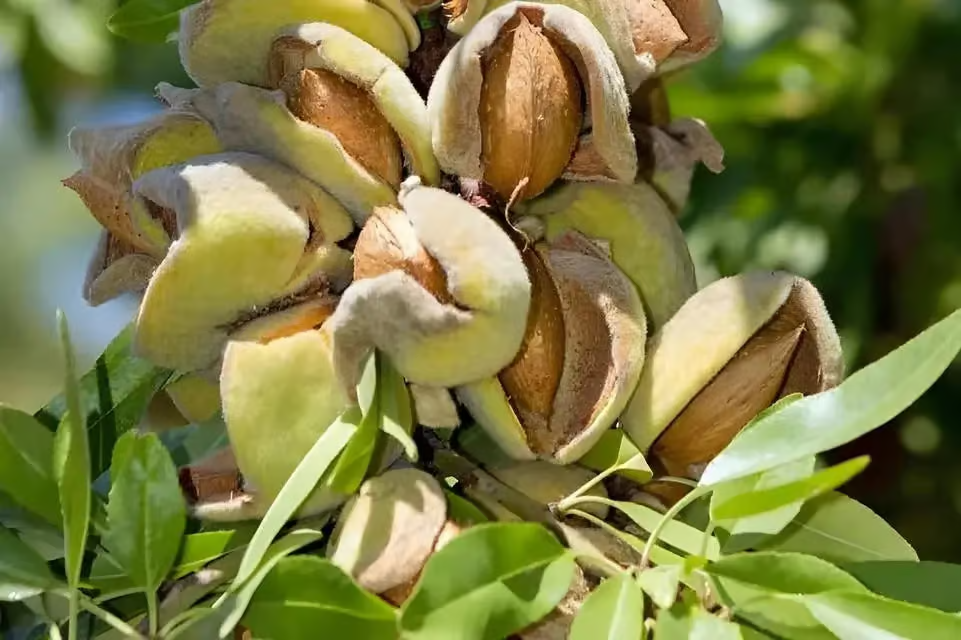
Nutritional Benefits:
Almonds are packed with vitamins, minerals, and healthy fats. Growing your own almond tree ensures a fresh supply of this nutritious superfood right in your backyard.
Self-Pollinating Variety:
Many almond tree varieties are self-pollinating, meaning you don’t need multiple trees to produce nuts. This makes them a practical option for smaller gardens or urban settings.
Beautiful Blossoms:
Almond trees are known for their stunning, delicate pink or white flowers that bloom in early spring. These blossoms add a touch of beauty and elegance to any garden.
Investment for the Future
An almond tree can provide you with nuts for many years. It’s a long-term investment that offers both aesthetic and practical benefits for your home.
Caring Tips
How do I care for my Hall's Hardy Almond Tree?
Each box contains detailed care instructions and information about your product. But here's the basics.
Care Tips
Almond Tree needs full sun, well-drained soil, and regular pruning.
Light Requirements
Water the Almond Tree regularly, especially during its first few years, to establish a deep root system. Trim in late winter to shape and remove dead wood. Fertilize in spring. Watch for pests and treat them as necessary.
Hardy Planting Zones
5 • 6 • 7 • 8 • 9 • 10
Header
Use this content to share information about your store and products.
Frequently Asked Questions
How often should I water my plants?
How do I know if my plant is getting too much or too little sunlight?
What should I do to prepare my plants for winter?
What are the signs that my plant needs fertilizing?
How can I prevent pests from damaging my plants?
How do I choose the right plant for my climate zone?



